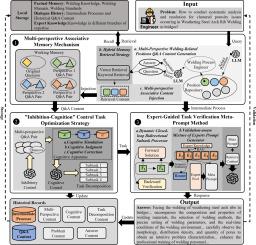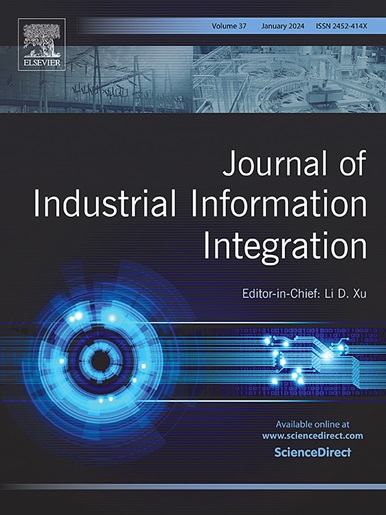Analysis of causes of welding defects in bridge weathering steel based on large language models
IF 10.4
1区 计算机科学
Q1 COMPUTER SCIENCE, INTERDISCIPLINARY APPLICATIONS
引用次数: 0
Abstract
The analysis of the causes of welding defects in bridge weathering steel necessitates a multifaceted approach integrating alloy element influences, crack control, and parameter optimization, as single-perspective methodologies inadequately address root causes and hinder effective solution development. To address these challenges, a large language model-based method for analyzing the causes of welding defects in bridge weathering steel is proposed. This method first integrates information from different welding perspectives through a multi-perspective associative memory mechanism and employs a hybrid retrieval strategy to retrieve factual memory and historical information, enabling precise recall of relevant content and providing comprehensive support for problem-solving. Second, a ”inhibition-cognition” task optimization strategy refines the problem-solving process by suppressing irrelevant information, decomposing tasks, and iteratively revising through cognitive simulation, thereby establishing a clear and efficient problem-solving pathway. Finally, the accuracy and consistency of sub-task processing are ensured by an expert-guided task verification meta-prompting method, where dynamic closed-loop validation is incorporated and expert knowledge is fused. Quantitative results demonstrate that the proposed method achieves consistent improvements in both ROUGE-L and BERTScore metrics across different models, while expert evaluations further confirm its exceptional performance in key dimensions such as rationality and comprehensiveness. This method provides a novel approach for analyzing the causes of welding defects in bridge weathering steel, playing a critical role in enhancing the accuracy and efficiency of defect analysis.

基于大语言模型的桥梁耐候钢焊接缺陷原因分析
分析桥梁耐候钢焊接缺陷的原因需要多方面的方法,包括合金元素的影响、裂纹控制和参数优化,因为单一视角的方法不能充分解决根本原因,阻碍了有效的解决方案的制定。为了解决这些问题,提出了一种基于大型语言模型的桥梁耐候钢焊接缺陷原因分析方法。该方法首先通过多视角联想记忆机制整合不同焊接角度的信息,并采用混合检索策略检索事实记忆和历史信息,实现对相关内容的精确回忆,为问题解决提供全面支持。其次,“抑制-认知”任务优化策略通过抑制不相关信息、分解任务、通过认知模拟迭代修正来细化问题解决过程,从而建立清晰高效的问题解决路径。最后,通过引入动态闭环验证和融合专家知识的专家引导任务验证元提示方法,保证子任务处理的准确性和一致性。定量结果表明,该方法在不同模型的ROUGE-L和BERTScore指标上取得了一致的改进,而专家评价进一步证实了该方法在合理性和综合性等关键维度上的卓越表现。该方法为分析桥梁耐候钢焊接缺陷的原因提供了一种新的方法,对提高缺陷分析的准确性和效率具有重要意义。
本文章由计算机程序翻译,如有差异,请以英文原文为准。
求助全文
约1分钟内获得全文
求助全文
来源期刊

Journal of Industrial Information Integration
Decision Sciences-Information Systems and Management
CiteScore
22.30
自引率
13.40%
发文量
100
期刊介绍:
The Journal of Industrial Information Integration focuses on the industry's transition towards industrial integration and informatization, covering not only hardware and software but also information integration. It serves as a platform for promoting advances in industrial information integration, addressing challenges, issues, and solutions in an interdisciplinary forum for researchers, practitioners, and policy makers.
The Journal of Industrial Information Integration welcomes papers on foundational, technical, and practical aspects of industrial information integration, emphasizing the complex and cross-disciplinary topics that arise in industrial integration. Techniques from mathematical science, computer science, computer engineering, electrical and electronic engineering, manufacturing engineering, and engineering management are crucial in this context.
 求助内容:
求助内容: 应助结果提醒方式:
应助结果提醒方式:


